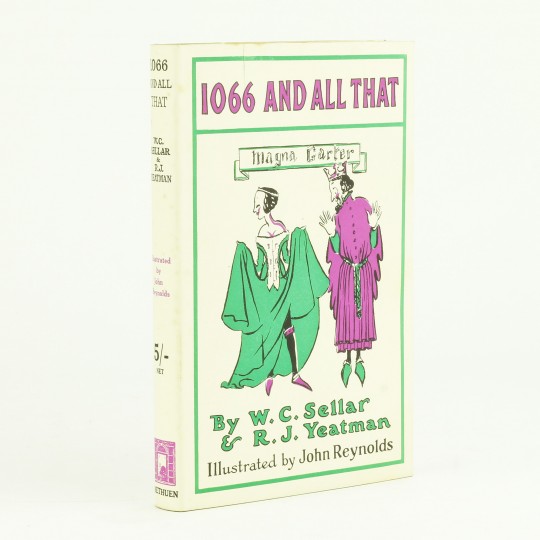

Despite the confusion of dates the Roman Conquest is the first of 103 historical events in the book characterised as a Good Thing, "since the Britons were only natives at that time".Ĭhapter II begins "that long succession of Waves of which History is chiefly composed", the first of which, here, is composed of Ostrogoths, Visigoths, mere Goths, Vandals, and Huns. However, when the date of the Roman invasion is given, it is immediately followed by the date that Caesar was "compelled to invade Britain again the following year (54 BC, not 56, owing to the peculiar Roman method of counting)". The two dates that are referenced in the book are 1066, the date of the Battle of Hastings and the Norman conquest of England (Chapter XI), and 55 BC, the date of the first Roman invasion of Britain under Julius Caesar (Chapter I). The book is full of examples of half-remembered and mixed-up facts.Īlthough the subtitle states that the book comprises "103 Good Things, 5 Bad Kings and 2 Genuine Dates", the book's preface mentions that originally four dates were planned, but last-minute research revealed that two of them were not memorable.

It purports to contain "all the History you can remember", and, in sixty-two chapters, covers the history of England from Roman times through 1066 "and all that", up to the end of World War I, at which time "America was thus clearly Top Nation, and history came to a. The book is a parody of the style of history teaching in English schools at the time, in particular of Our Island Story. With its conflation of history and memory, and its deconstruction of "standard" historical narrative lines, the book can also be seen as an early post-modernist text. īoth the Tory view of a 'great man' history, and the liberal pieties of Whig history are undermined in the work, in the (then contemporary) style of such serious historians as Namier and Herbert Butterfield.

Raphael Samuel saw 1066 and All That as a product of the post- First World War debunking of British greatness, very much in the tradition of Eminent Victorians (1918): as he put it, "that much underrated anti-imperialist tract 1066 and All That punctured the more bombastic claims of drum-and-trumpet history". Yeatman and illustrated by John Reynolds, it first appeared serially in Punch magazine, and was published in book form by Methuen & Co. 1066 and All That: A Memorable History of England, Comprising All the Parts You Can Remember, Including 103 Good Things, 5 Bad Kings and 2 Genuine Dates is a tongue-in-cheek reworking of the history of England.


 0 kommentar(er)
0 kommentar(er)
